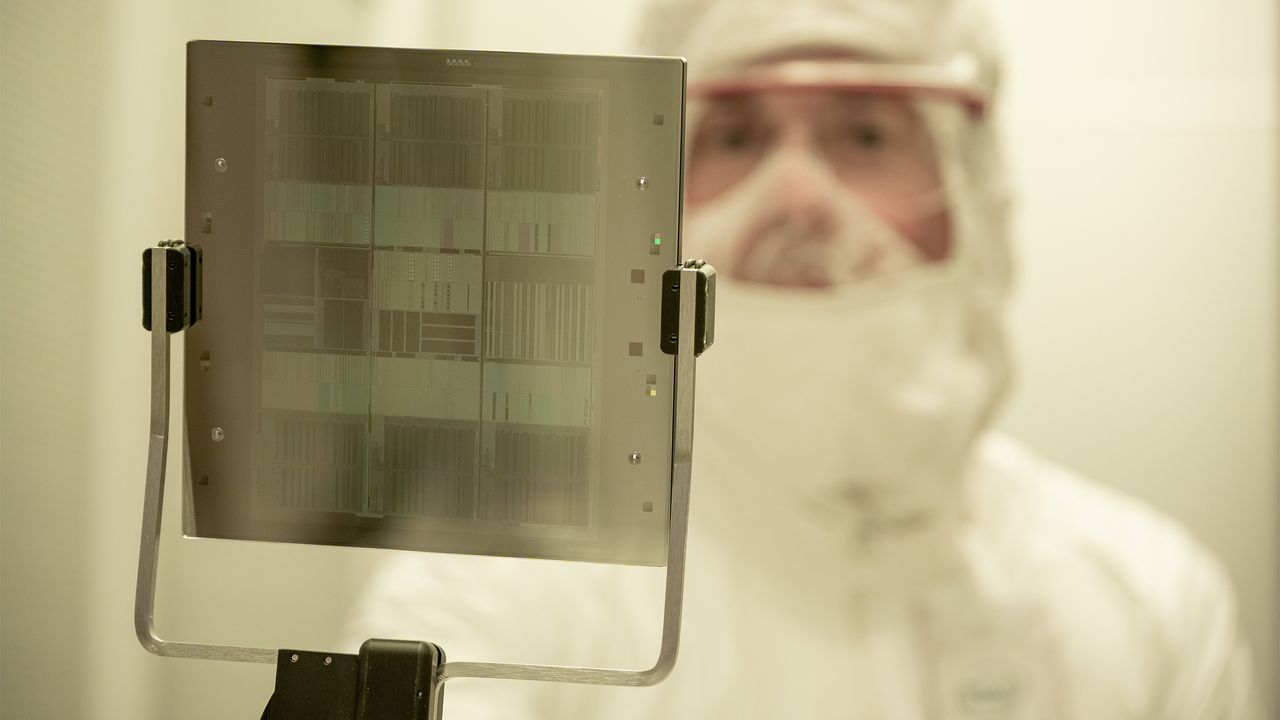
Intel may slow down or even cancel development of its 14A process technology (1.4nm-class) if it fails to land a major external customer for this production node, or if the fabrication process fails to meet crucial milestones. This is the first time Intel has admitted to considering withdrawing from the leading-edge semiconductor technology race for a major node, essentially leaving leading-edge process technologies to TSMC and possibly Samsung Foundry.
Among the topics Intel discussed during its earnings call on Thursday were its approaches to investing in production capacity and the development of next-generation process technologies, as well as its focus on improving its return on investment and profitability. While the company remains committed to its roadmap through Intel 18A and 18A-P, the continuation of its next-generation Intel 14A process depends heavily on attracting a major outside customer and meeting specific development milestones.
“If we are unable to secure a significant external customer and meet important customer milestones for Intel 14A, we face the prospect that it will not be economical to develop and manufacture Intel 14A and successor leading-edge nodes on a go-forward basis,” a statement by Intel in a 10Q filing with the SEC reads. “In such event, we may pause or discontinue our pursuit of Intel 14A and successor nodes and various of our manufacturing expansion projects.”
The Intel 14A node is planned as the successor to the 18A and 18A-P nodes, and is aimed at both internal products and external clients. However, the company made clear that it may halt or abandon 14A development if it cannot secure a large external partner or achieve critical progress targets. This represents a major shift in Intel’s strategy toward market-driven node development, where new technologies must demonstrate commercial viability before being developed and before appropriate tools are purchased to enable high-volume manufacturing.
“The 14A is the process node, but clearly I will make sure that I see the internal customer, external customer, and volume commitment before I put CapEx,” said Lip-Bu Tan, chief executive of Intel, during the company’s conference call with analysts and investors. “But that is something that has to meet my requirement in terms of performance and yield. It’s a lot of responsibility to be serving our customers, make sure that we can deliver the result — consistent, reliable result — to them, so that their revenue can depend on us.”
Modern leading-edge process technologies cost billions to develop. Intel spent $16.546 billion on research and development (R&D) in 2024, with a significant portion allocated to the development of 18A, 18A-P, 14A, and other process technologies. While it is challenging to determine the exact cost of the 14A project, it is safe to say that it will be in the billions of dollars.
Additionally, Intel 14A is expected to be the company’s first process technology to utilize High-NA EUV lithography for at least three critical layers. Each ASML Twinscan EXE:5000/5200 High-NA EUV tool is projected to cost around $380 million. Therefore, procuring two such tools for a fab to enable high volume manufacturing (HVM) on 14A will cost Intel a whopping $760 million. Given such vast upfront costs, Intel needs to ensure that these tools will be used by both internal products and external customers.
For now, Intel has at least one internal design planned for 14A, though the company is keeping its options open. If 14A does not move forward, future Intel designs needing greater transistor density and performance than 18A-P could be manufactured using third-party foundries (read: TSMC).
If Intel ultimately cancels 14A and its successors, it expects to continue building the majority of its products in-house on nodes up to 18A-P through at least 2030. This is expected to support a wide range of offerings, while limiting capital deployment to technologies and fabs. However, it remains to be seen what happens to Intel’s margins if its most advanced products are made by external foundries (i.e., TSMC) using their leading-edge nodes.
Follow Tom’s Hardware on Google News to get our up-to-date news, analysis, and reviews in your feeds. Make sure to click the Follow button.






